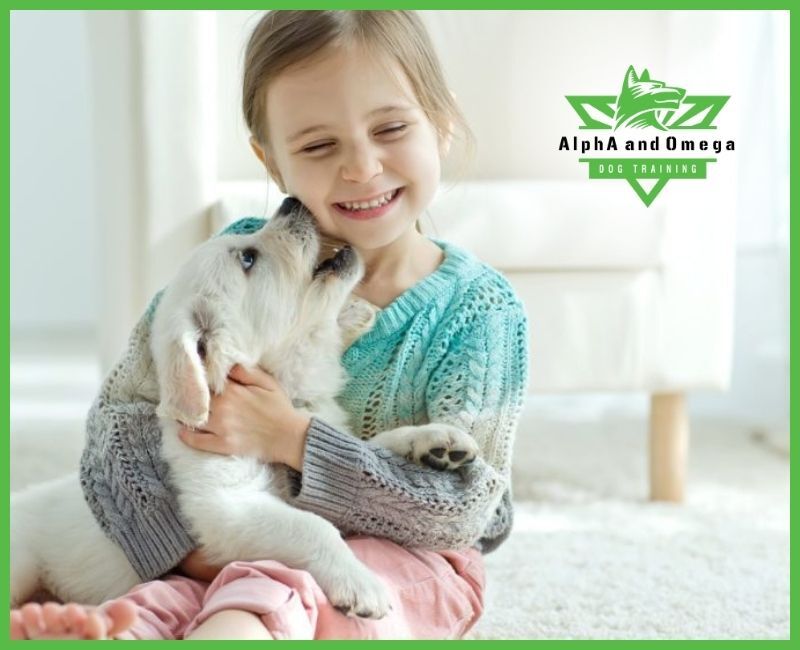Introduce a puppy to a dominant dog by isolating the puppy for the first couple of days and gradually transitioning their interactions under supervision.
Preparing For The Introduction
Introducing a puppy to a dominant dog can be a delicate process. Take your time and make sure to properly supervise and manage their interactions to ensure a smooth transition and positive relationship between the two.
Isolating The Puppy For The First Few Days
Before introducing your puppy to your dominant dog, it is important to isolate the puppy for the first few days. This step allows the puppy to familiarize themselves with their new environment and adjust to the smell and sounds of the house. It also gives them a chance to rest and recover from the stress of their journey to their new home.
During this isolation period, make sure to provide the puppy with a comfortable space of their own, such as a crate or a designated room. This will serve as their safe haven and give them a sense of security. Keep in mind that the crate should be big enough for the puppy to stand up, lie down, and turn around comfortably.
It is essential to spend quality time with the puppy during this period to build trust and establish a bond. This will help the puppy feel more secure and confident when they eventually meet the dominant dog.
Creating A Gradual Transition
Once the puppy has had time to settle in and adjust to their new environment, you can start the process of introducing them to your dominant dog. It is crucial to create a gradual transition to ensure a smooth and positive interaction between the two dogs.
One effective way to facilitate this gradual transition is by using scent swapping. Swap bedding or toys between the puppy and the dominant dog, allowing them to get familiar with each other’s scent. This helps in reducing any potential tension or territorial behavior during the actual face-to-face introduction.
When it comes to the face-to-face introduction, it is advisable to do it in a neutral territory, such as a park or a friend’s backyard. This neutral environment decreases the likelihood of any territorial behavior from either dog.
Remember to keep both dogs on a leash during the introduction and closely monitor their body language. Give them space to sniff and interact at their own pace while ensuring the leashes are loose to minimize tension.
If the dogs show signs of stress or aggression, it is crucial to separate them and seek professional help from a dog trainer or behaviorist. Gradual transitions may take time, and it is important to prioritize the safety and well-being of both dogs throughout the process.
By isolating the puppy for the first few days and creating a gradual transition, you can set a solid foundation for introducing your puppy to your dominant dog. Remember to be patient, observant, and prioritize the safety and comfort of both dogs. With time and proper guidance, they can form a harmonious bond and become the best of friends.

Credit: www.adaptil.co.uk
Introducing The Puppy To The Dominant Dog
Introducing a puppy to a dominant dog requires careful steps to ensure a smooth transition. Gradually introduce the two dogs in a neutral space, allowing them to interact at their own pace while closely monitoring their behavior.
Understanding Body Language
When introducing a puppy to a dominant dog, understanding body language is crucial. Dogs communicate primarily through their body postures and facial expressions. By observing their body language, you can ensure a smoother introduction process between the two dogs. Look for signs of aggression, fear, or submission, such as raised hackles, pinned ears, or a tense body posture. It’s essential to intervene if you notice any signs of potential conflict and redirect their attention to positive interactions.
Using Leash To Control Interactions
Using a leash to control interactions between the puppy and dominant dog is a useful tool. It allows you to guide their movements and prevent any unwanted behaviors or fights. When introducing them, keep both dogs on a leash, making sure to maintain a loose lead to reduce tension. Allow them to sniff and investigate each other at a comfortable distance, gradually decreasing the distance as they become more comfortable. If any signs of aggression or discomfort arise, be ready to separate them and give them a break before trying again later.
Differentiating Communication And Aggression
Differentiating between communication and aggression is essential during the introduction process. Dogs use various communication signals to establish their boundaries and interact with each other. These signals can include play bows, tail wagging, and relaxed body postures. However, it’s crucial to distinguish between playful behavior and potential aggression. If one of the dogs becomes overly dominant, displays stiff body language, or shows signs of aggression, it’s necessary to intervene and redirect their behavior to prevent any harm.
Troubleshooting And Tips For Success
Learn the troubleshooting and tips for successfully introducing a puppy to a dominant dog, including isolating the puppy for the first couple days and gradually transitioning their interactions. Avoid allowing the puppy to choose the other dog over you and schedule training sessions to establish routines.
Walking The Puppy Away During Tense Moments
When introducing a puppy to a dominant dog, it’s important to address tense moments during their interactions. One effective strategy is to walk the puppy away from the dominant dog when you notice signs of tension building up. This allows both dogs to have a break and diffuse any potential conflicts. By redirecting their attention to a calming activity such as a walk, you can help them establish a positive association with each other’s presence.Dealing With Possessive Behaviors
Possessive behaviors can create tension between a dominant dog and a new puppy. To address this issue, it’s crucial to set clear boundaries and provide consistent training. When both dogs are present, it’s important to limit access to resources such as food, toys, and sleeping areas. This helps prevent possessive behaviors from escalating. Additionally, consider rewarding both dogs for sharing resources and exhibiting positive behavior towards each other. This can promote a harmonious relationship and reduce possessiveness over time.Allowing Sufficient Time For Adjustment
Introducing a puppy to a dominant dog requires patience and allowing sufficient time for adjustment. Each dog needs to establish their roles within the pack, which can take up to a month. During this time, it’s important to closely supervise their interactions and intervene when necessary. Provide separate spaces for each dog, allowing them to have their own safe areas where they can retreat to. Gradually increase their supervised interactions, ensuring that both dogs feel secure and comfortable. Remember, a successful introduction takes time and consistent effort.
Credit: alphaandomegadogtraining.com

Credit: petstop.com
Frequently Asked Questions On How To Introduce A Puppy To A Dominant Dog
How Do You Introduce An Aggressive Dog To A Puppy?
To introduce an aggressive dog to a puppy, keep both dogs leashed initially to reduce tension. Find a neutral area for the introduction and allow them to sniff and meet each other at their own pace. Watch their body language and progress slowly.
How Do You Introduce A Possessive Dog To A New Puppy?
To introduce a possessive dog to a new puppy, find a neutral area for the introduction. Have the older dog on a leash while someone else holds the puppy on a leash. Allow them to sniff and meet each other without holding them tightly.
How Long Does It Take For An Older Dog To Accept A New Puppy?
It can take about a month for an older dog to fully accept a new puppy. It’s important to be patient and committed to the process of introducing them to each other. Avoid rushing and allow them to gradually get comfortable with one another’s presence.
How Do You Introduce A Protective Dog To A New Dog?
To introduce a protective dog to a new dog, start on neutral territory with plenty of space. Walk on opposite sides until they are no longer focused on each other, giving treats when they look at each other. Gradually increase their interactions and monitor their behavior closely.
Conclusion
Introducing a puppy to a dominant dog can be challenging, but with the right approach, it is possible to create a harmonious environment for both pets. Start by isolating the puppy for the first couple of days and gradually introduce them to the older dog using leash walks.
Limit interactions and closely monitor their body language to avoid any potential aggression. Remember, patience and consistency are key during this process. By following these steps, you can successfully introduce a puppy to a dominant dog and ensure a peaceful coexistence in your home.



